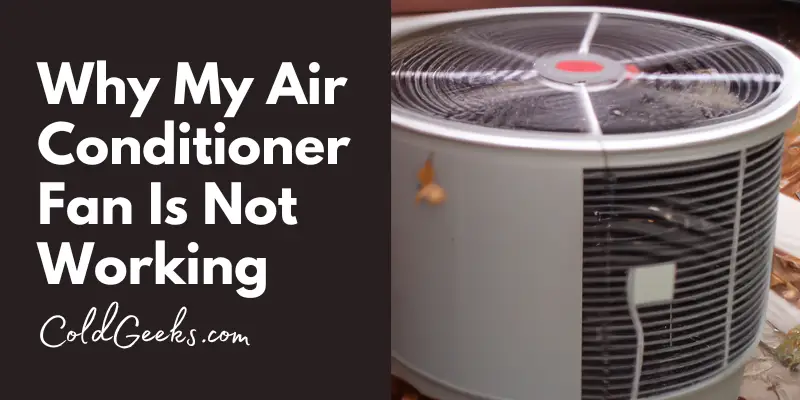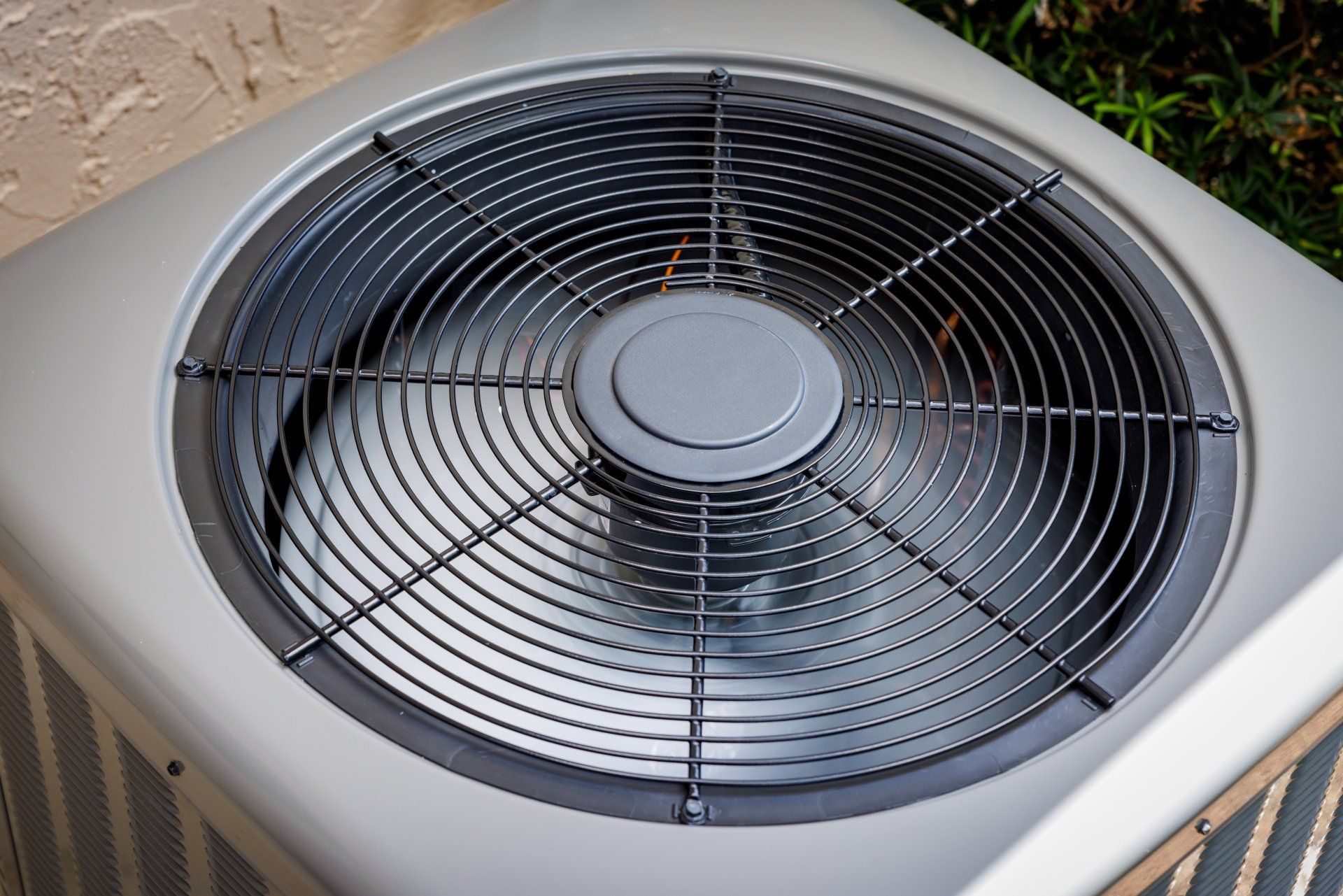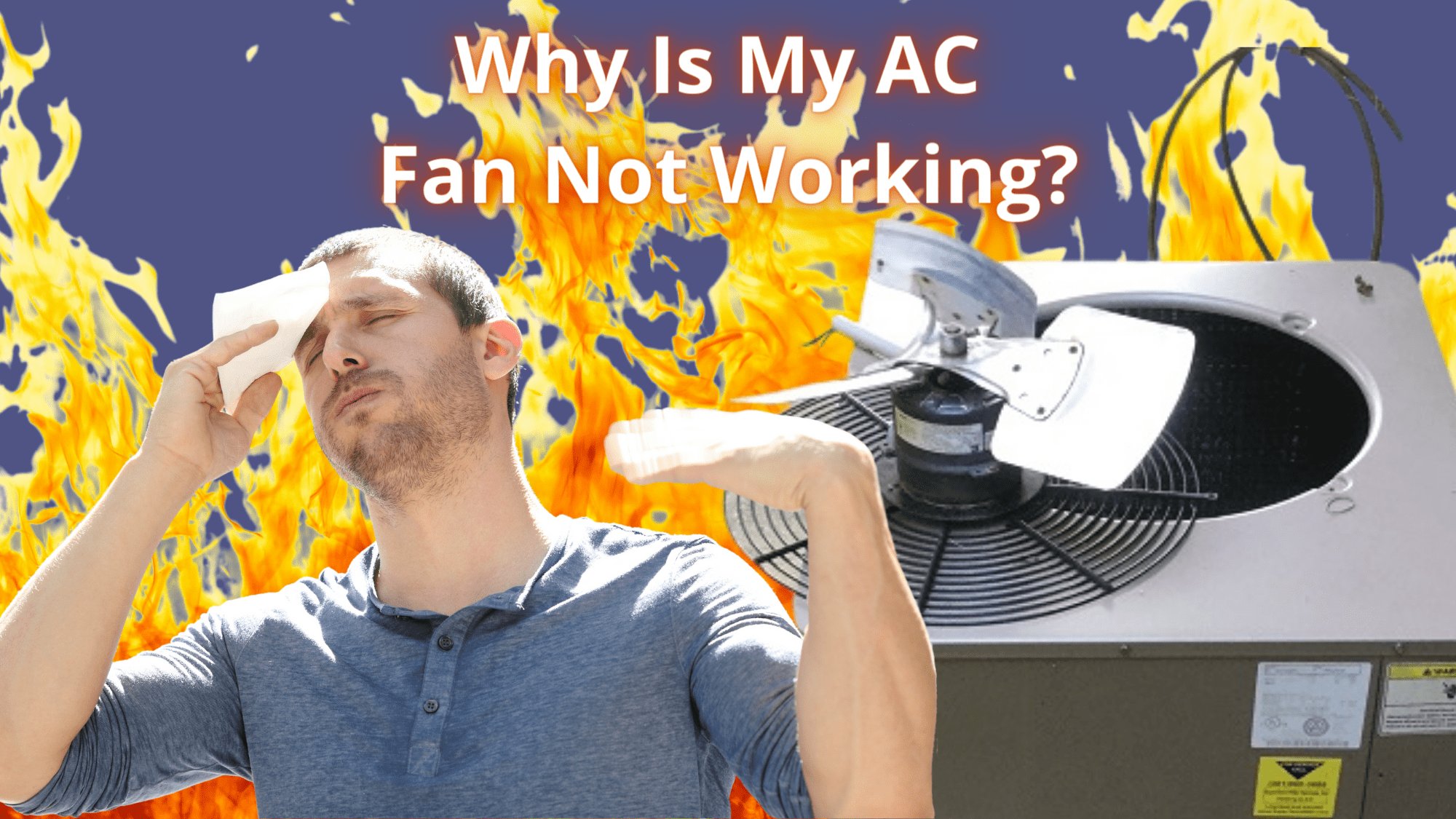Why Is The Fan Not Working On My Ac Unit

A malfunctioning AC unit fan can quickly turn a sweltering summer day into an uncomfortable ordeal. Whether you're a homeowner looking for a DIY fix, an HVAC technician troubleshooting a system, or a property manager responsible for maintaining a building's climate, understanding the common causes behind a non-operational AC fan is crucial. This article dives deep into the potential culprits, offering insights, troubleshooting tips, and preventative measures to keep your cooling systems running smoothly.
Understanding Your AC Unit's Fan: A Primer
Before we delve into the diagnostics, let's briefly cover the roles of the different fans in your AC system. Most residential and light commercial AC systems have two primary fans: the condenser fan (located in the outdoor unit) and the blower fan (located inside, usually within the air handler or furnace). While both circulate air, they serve distinct purposes:
- Condenser Fan: This fan is responsible for dissipating heat from the refrigerant as it flows through the condenser coils. It essentially cools down the refrigerant after it has absorbed heat from inside your home. Think of it as the radiator of your AC system.
- Blower Fan: Also known as the indoor fan, this fan circulates air throughout your home via the ductwork. It pulls air across the evaporator coil (where the refrigerant is cooling it) and pushes the chilled air into your living spaces. Without it, the cool air stays trapped inside the unit.
Understanding which fan is malfunctioning is the first step in diagnosing the problem. Is it the outdoor unit's fan that's not spinning, or is the indoor air not circulating properly?
Common Causes of a Malfunctioning Condenser Fan
If the condenser fan isn't working, the AC unit struggles to release heat, leading to reduced cooling efficiency and potential compressor damage. Here are some common reasons:
1. Electrical Issues
Blown Fuse or Tripped Breaker: This is often the simplest explanation. Check your electrical panel for a tripped breaker or blown fuse related to the AC unit. Reset the breaker or replace the fuse, but be aware that repeated tripping or blowing indicates a more serious underlying electrical problem that requires professional attention. Repeated blowing could mean a short circuit or an overloaded circuit. Replacing the fuse with a higher amp fuse is dangerous and should never be done.
Faulty Capacitor: The capacitor provides the electrical surge needed to start the fan motor. A failing capacitor is a very common cause of fan motor failure. It is a cylindrical component, usually grey or black, located near the fan motor. A bulging or leaking capacitor is a sign of failure. Capacitors come with specific voltage and microfarad (µF) ratings; be sure to replace it with a capacitor of the exact same specifications.
Wiring Problems: Damaged or loose wiring can interrupt the electrical current to the fan motor. Inspect the wiring connections within the unit and look for any signs of corrosion, fraying, or loose connections. Turn off the power at the breaker before inspecting any electrical components.
Faulty Fan Motor: The fan motor itself might be burned out or have internal damage. This can be tested using a multimeter to check for continuity. If the motor is faulty, replacement is usually the best option. Consider the age of the unit when making this decision. Replacing the fan motor on a very old unit might not be cost-effective in the long run.
2. Mechanical Problems
Obstructions: Leaves, debris, or even overgrown vegetation can obstruct the fan blades, preventing them from spinning. Regularly clean around the outdoor unit to ensure proper airflow. A good rule of thumb is to maintain at least 2-3 feet of clear space around the unit.
Worn Bearings: The fan motor's bearings can wear out over time, causing friction and preventing the fan from spinning freely. A squealing or grinding noise is often an indication of worn bearings. Lubricating the bearings can sometimes provide a temporary fix, but replacement of the motor is usually the best long-term solution.
Bent Fan Blades: Bent fan blades can create imbalance and prevent the fan from spinning properly. Carefully inspect the blades and straighten any minor bends. Severely damaged blades should be replaced.
3. System Issues
Overheating Compressor: In some cases, the compressor might be overheating and shutting down the entire system, including the fan, as a safety measure. This could be due to a refrigerant leak, restricted airflow, or a faulty compressor. This is a serious issue that requires professional diagnosis and repair.
Common Causes of a Malfunctioning Blower Fan
If the blower fan isn't working, you'll notice that the air coming from your vents is weak or non-existent. Here are some potential causes:
1. Electrical Issues
Blown Fuse or Tripped Breaker: Just like with the condenser fan, check the breaker or fuse related to the air handler or furnace. The blower motor often has its own dedicated circuit.
Faulty Capacitor: Similar to the condenser fan motor, the blower motor also relies on a capacitor to start and run. A failing capacitor is a common culprit. Check for signs of bulging or leaking.
Faulty Blower Motor: The blower motor itself could be damaged. Blower motors can be either AC or DC, and they may have multiple speeds. Testing the motor with a multimeter can help determine if it's faulty.
Relay Issues: Relays control the different speeds of the blower motor. A faulty relay can prevent the motor from running at all or from switching to the correct speed. A clicking sound from the relay box might indicate a problem.
2. Mechanical Problems
Dirty Air Filter: A severely clogged air filter restricts airflow, which can overload the blower motor and cause it to overheat and shut down. Replace your air filter regularly – typically every 1-3 months, depending on usage and air quality. A dirty filter forces the system to work harder, reducing efficiency and potentially causing damage.
Obstructions in Ductwork: Blockages in the ductwork, such as collapsed ducts or accumulated debris, can also restrict airflow and overload the blower motor. Inspect the ductwork for any visible obstructions.
Blower Wheel Issues: The blower wheel, which is the part of the fan that actually moves the air, can become loose, unbalanced, or clogged with debris. This can cause the motor to vibrate excessively and eventually fail. Clean the blower wheel periodically to remove any accumulated dust or debris.
3. System Issues
Frozen Evaporator Coil: If the evaporator coil freezes over, it can severely restrict airflow and cause the blower motor to work harder. This is often caused by low refrigerant, a dirty air filter, or a malfunctioning thermostat. A frozen coil will often appear with ice formation on the copper lines connected to the indoor unit.
Troubleshooting Steps: A DIY Approach (with Caution)
Before calling a professional, you can try these troubleshooting steps, but always prioritize safety. Turn off the power to the AC unit at the breaker before performing any inspections or repairs.
- Check the Breaker/Fuse: As mentioned earlier, this is the first and easiest step.
- Inspect for Obstructions: Clear any debris from around the condenser unit and check for obstructions in the ductwork.
- Replace the Air Filter: A dirty air filter is a common culprit and an easy fix.
- Visually Inspect the Capacitor: Look for signs of bulging or leaking. If you see these, replace the capacitor (after turning off the power!) with a matching replacement.
- Listen for Unusual Noises: Squealing, grinding, or clicking noises can provide clues about the problem.
Warning: Working with electrical components can be dangerous. If you're not comfortable with electrical work, it's best to call a qualified HVAC technician.
When to Call a Professional HVAC Technician
While some issues can be resolved with simple DIY fixes, other problems require the expertise of a qualified HVAC technician. Call a professional if:
- You're uncomfortable working with electrical components.
- You suspect a refrigerant leak.
- The compressor is making unusual noises.
- The problem persists after trying the troubleshooting steps.
- You lack the necessary tools or knowledge to diagnose and repair the issue.
Preventative Maintenance: Keeping Your AC Fan Running Smoothly
Regular preventative maintenance is key to avoiding AC fan problems and extending the lifespan of your system. Here are some tips:
- Schedule Annual Maintenance: Have a qualified HVAC technician inspect and service your AC unit annually. This includes cleaning the coils, checking the refrigerant level, and inspecting the electrical components.
- Replace Air Filters Regularly: As mentioned before, replace your air filters every 1-3 months, depending on usage and air quality.
- Keep the Outdoor Unit Clean: Clear away any debris from around the condenser unit regularly.
- Trim Vegetation: Keep shrubs and bushes trimmed back from the outdoor unit to ensure proper airflow.
- Monitor System Performance: Pay attention to any changes in system performance, such as reduced cooling efficiency or unusual noises.
Cost Considerations
The cost of repairing an AC fan can vary depending on the cause of the problem. Replacing a capacitor is relatively inexpensive, typically costing between $50 and $200. Replacing a fan motor can range from $200 to $600 or more, depending on the type of motor and the complexity of the installation. If the compressor is damaged due to a faulty fan, the repair costs can be significantly higher, potentially reaching thousands of dollars. Regular maintenance can help prevent these costly repairs.
Efficiency and Lifespan
A well-maintained AC system will operate more efficiently and last longer. Proper airflow, facilitated by a functioning fan, is crucial for optimal cooling performance. Neglecting maintenance can lead to reduced efficiency, higher energy bills, and a shortened lifespan for your AC unit. A typical AC unit, with proper maintenance, can last 15-20 years. However, a neglected unit may only last 10 years or less.
By understanding the potential causes of a malfunctioning AC fan and taking proactive steps to maintain your system, you can ensure reliable cooling performance and avoid costly repairs. Whether you're a homeowner, technician, or property manager, this knowledge empowers you to keep your HVAC systems running efficiently and effectively.










